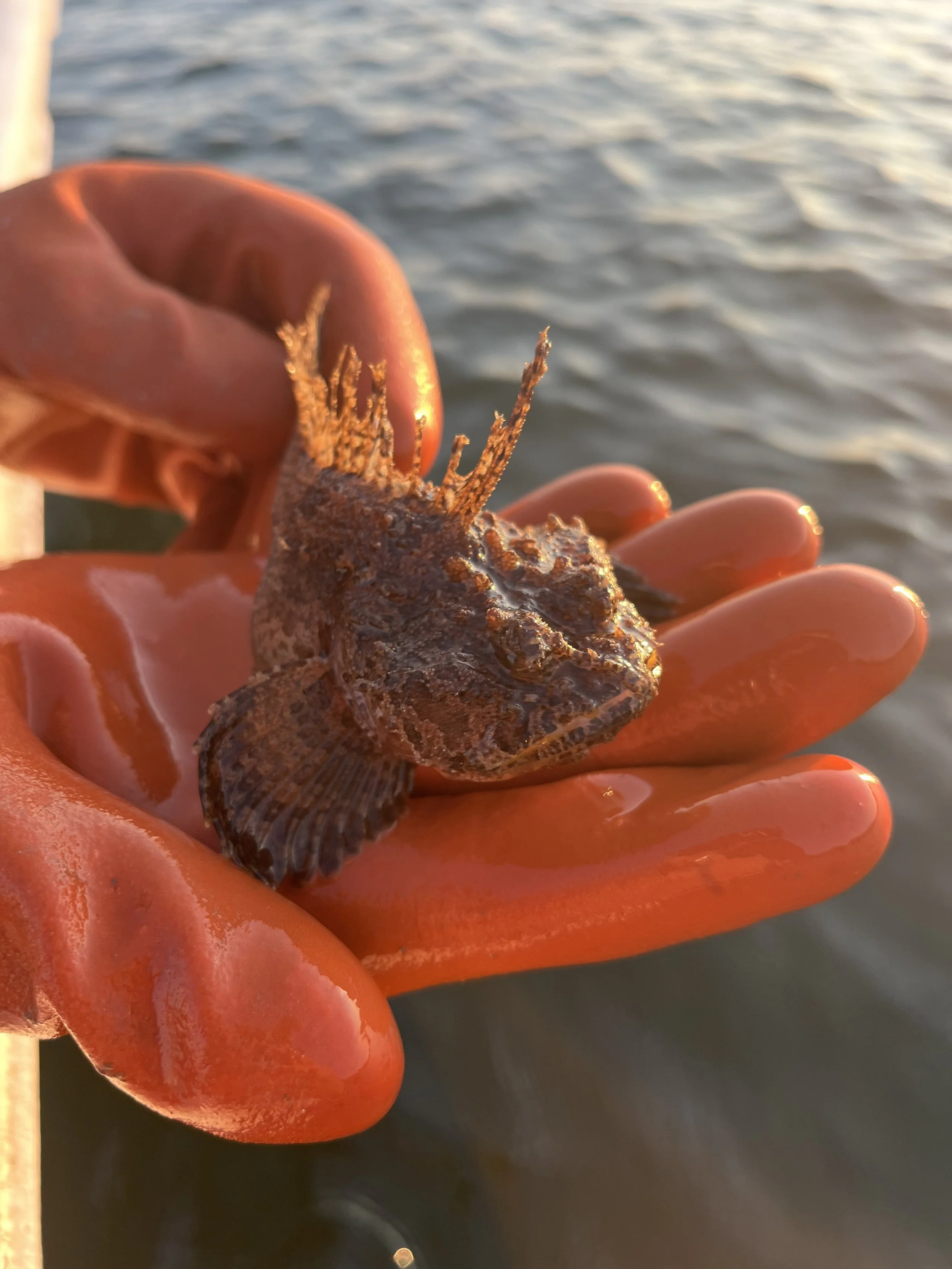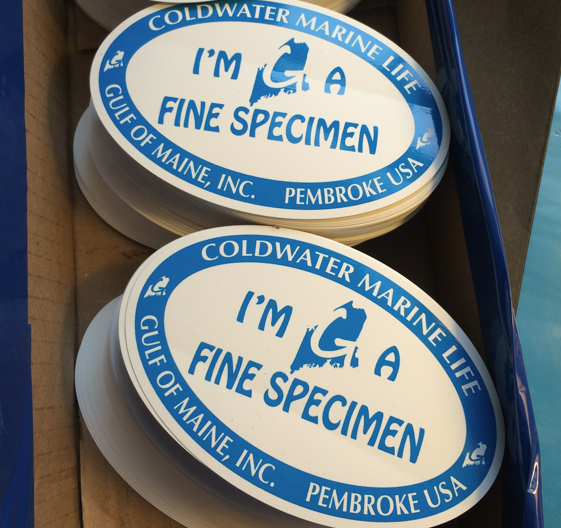Why Arctic Fish Don’t Freeze: Extreme Marine Life
Antifreeze proteins
Polar sea water usually hovers around its freezing point: −1.8 °C, (28.8 °F). Under sheets of ice, in the deep, dark water of the polar regions, you might expect to find a desolate ecosystem. Perhaps only extremophile microbes. This is not the case. Under the ice, fishes are thriving!
How is this possible? They’re cold-blooded (ectotherms), after all. Their bodies don’t produce their own heat, and fishes are theoretically temperature consistent with the seawater. A tropical fish would immediately freeze if dropped into Arctic waters since the temperature of the saline liquid is below the freezing point of the fresh water in the cells of the fish.
The mechanism that has allowed fishes to survive in the presence of structurally diverse antifreeze proteins in their tissues. These proteins possess the powerful ability to separate the melting and growth temperatures of ice. These proteins have evolved independently in different kinds of cold-adapted ectothermic animals, including insects and teleost fishes, where they protect against lethal freezing of the body fluids. The AF proteins stick to developing ice crystals and prevent them from growing enough to damage tissue.
Trypsin-Like Serine Proteases
Antifreeze proteins function very similarly to trypsin-like serine proteases, which “attack” or stick to biomolecules through various mechanisms. TLSP enzymes are responsible for protein hydrolysis in our digestive system, clotted blood, infection resistance, and egg fertilization.
The AFGP found in Antarctic fishes, in fact, evolved from a serine protease of the pancreas.² But not all AFGPs are the same. They have evolved independently many times and allowed those species that possess them to adaptively radiate throughout a freezing niche with little competition.
Antifreeze proteins come in many “flavors”...fungi, bacteria, insects, polar fishes and even plants utilize antifreeze proteins to prevent their tissues from crystallizing in freezing temperatures. This is a case of convergent evolution, meaning TLSPs are relatively evolutionarily malleable. Humans haven't evolved them because our genome has not experienced pressure to develop AFGPs - we are warm-blooded endotherms, and we generate our own heat.
AFGPs are part of a larger class of ice-binding proteins (IBPs) which are utilized by subzero tolerant organisms. These proteins include:
Antifreeze proteins (AFGPs) with high thermal hysteresis antifreeze activity
Low thermal hysteresis IBPs
Ice nucleating proteins (INPs)
Multiple structurally distinct IBPs have arisen even within related taxa. True antifreeze proteins (1) are found in freeze-avoiding organisms which will die if frozen. In contrast, less active proteins (2) are found in freeze tolerant species, which are able to survive being frozen.
Molecular Evolution
About 30 million years ago, the waters of the Antarctic region became very cold. The fossil record shows Antarctica's once great diversity of fish was reduced to a single suborder Notothenioid. Their secret to success? The divergence of the antifreeze protein. These fish survived and had the opportunity to radiate into their choice of diet and habitats. They grew enormously in population size, creating subpopulations.² More than 90 species of these fish exist today. This is a classic example of adaptive radiation in evolution, similar to Darwin’s 13 finch species on the Galapagos.
On the other side of the globe, Arctic fishes evolved antifreeze proteins too, but through a different mechanism. The stunning diversity and spatial distribution of AFGPs leads scientists to believe that the different types evolved recently in response to sea level glaciation 2 million years ago in the northern hemisphere, and 30 million years ago in Antarctica. This sort of independent development of similar adaptations is referred to as convergent evolution.
The reason that multiple types of protein do the same job and have the same name is that they are very similarly shaped when they are folded, and they act on different surfaces of the ice molecules. Ice is always composed of oxygen and hydrogen, but it has many different surfaces for binding.
Applications in technology
Scientists have identified many nuances of antifreeze proteins, and they have been very useful in developing a number of human technologies, like to create perfectly consistent ice cream! In order to bring these advances into medicine, an interesting question was required to be answered: why do antifreeze proteins lock onto the ice but not liquid water?
“If AFPs bound as easily to liquid water as they do to ice, this lifesaving action could turn killer, as animals would quickly dehydrate,” says Matthew Blakeley at the Laue-Langevin Institute in Grenoble, France.¹
How do we ensure healthy tissue is not damaged by molecules similar to antifreeze proteins when they are sent into the human body to attack a tumor? The answer lies in the tertiary structure of proteins: their shape. The shape of a protein is determined by a few factors. Proteins are amino acid chains. Between 20 common amino acids, at least two are linked to create a polypeptide chain, or protein. Each amino acid building block has a particular chemical profile based on its elemental components and their configuration. The profile of two amino acids determines what reaction will take place when they are in proximity. Every protein folds to a particular, signature shape due to the interaction between its amino acid components.
Antifreeze proteins act as a structural lock and key, based on their shape and the shape of ice crystals. They are compatible with the spiky formation of ice crystals, not the loose structure of water. By nature, they will not bind to water, and not dehydrate the organism they belong to.
Connection to the Gulf of Maine
The Gulf of Maine is our home, and we have AFGPs to thank for the survival of our fishes! Some of our favorites - sculpin, sea raven, ocean pout, and the Atlantic tomcod use AFGPs to tolerate our cold waters.
Cheers to the beauty of molecular evolution!
References
1. Barras, Colin. (2011, April 13). Polar Animals' Antifreeze has a Spiky Secret. Retrieved from https://www.newscientist.com/article/mg21028083-300-polar-animals-antifreeze-has-a-spiky-secret/
2. Logsdon, J. M., & Doolittle, W. F. (1997). Origin of antifreeze protein genes: A cool tale in molecular evolution. Proceedings of the National Academy of Sciences of the United States of America, 94(8), 3485–3487.





Live Atlantic Tomcod (Microgadus tomcod)
Please note this is a live marine specimen.
The Atlantic Tomcod (Microgadus tomcod), also known as winter cod or frostfish, is a small cold-water fish commonly found in the shallow coastal waters of Maine. Closely related to the Atlantic cod, this hardy species is well adapted to winter conditions and is recognized by its olive coloration, pale underside, and slender body. The tomcod plays an important role in coastal ecosystems and serves as both a forage species and a popular choice for bait fishing. Sustainably caught using hand lines, each specimen is carefully handled to maintain freshness and vitality for use in aquariums, classroom study, or bait applications.
Key Facts:
Common name: Atlantic tomcod, winter cod, frostfish
Scientific name: Microgadus tomcod
Locations: Shallow ocean waters
Seasonality: Available all year
Colors: Olive, white belly, beige, tan
Size: 8” – 11”
Collected: Fishing line
Quantity: Sold by the each
Note: This is a live marine specimen. Natural variations in size, color, and appearance from photos should be expected. If you would like any specimen preserved, please send a request to: info@gulfofme.com.